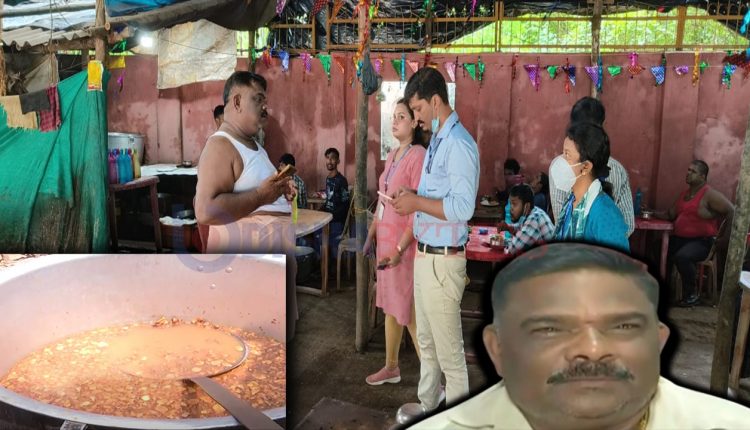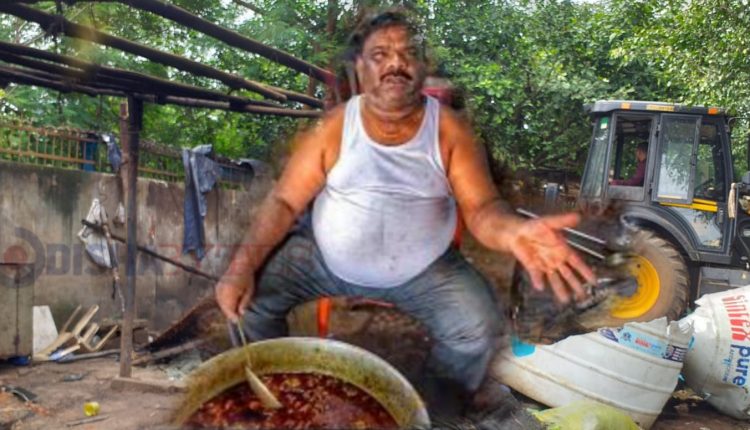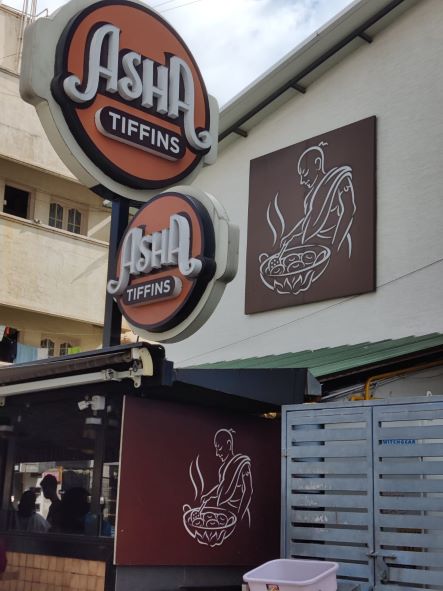Not So Yummy! Kishore Bhaina & BMC’s Meaty Affair

I flew out of Bhubaneswar when the drama surrounding Kishore Bhaina’s Roadside Hotel was at its peak.
For those who came late; it started with the BMC authorities sealing his eatery with the notice of non-compliance with food quality and hygiene standards. It was not an isolated incident; they had done it at more than a dozen such places as part of their routine drive. It’s a known fact that the evicted encroachments get back to business the very next day while the media and authorities look the other way.
Kishore Bhaina did just that.
But then Kishore Bhaina was just not another roadside eatery illegally operating on public land. Kishore Bhaina Mutton had gained popularity because of many contents hungry not-to-be-trusted food bloggers who kept on describing how it attracts thousands of foodies every day and he in his hand cooks 200 kg of mutton every day. He with his 200 kg torso has been enjoying cult status.
But popularity also attracts the visibility of undesirable kinds.
Kishore instead of lying low, chose to give Byte to some reporter dismissing the claim of the BMC about his food quality and inputs as false. He had gotten into speaking to the bloggers in his characteristic nonchalant way. Some web portals carried his bytes and the whole news got viral. As it gained traction, it turned into a public David (Kishore Bhaina) Vs Goliath (BMC authorities), where the incompetence of BMC was publicly criticized.
To save its reputation, BMC had to respond to the challenge made by this upstart. The duel was inevitable.
The next day, BMC authorities marched into the same spot under full media glare and razed the temporary bamboo structures of the fabled Kishore Bhaina Hotel, behind the Doordarshan Centre, to the ground using heavy machinery. The media and viewers got their quota of blood and gore which they had not had since the demolition of the twin tower of Greater Noida.

In the ensuing kerfuffle, many issues surfaced.
The importance of street food as a symbol of local culture, its relevance in society as it serves the need of a section of people, as a successful enterprise, and its importance as an employer of thousands of unskilled labour. In the discussion, the issues of poor food quality compromising hygiene, public nuisance as an encroacher of public space and a major cause of traffic snarls also surfaced. The viewers were divided in their support of both parties. Many saw this as the authorities showing seriousness about administration and others saw this as destroying a successful home-grown enterprise in the name of silly compliance.
Both sides were right in their ways.
But the major worry was the scenario where the society either has legally established, tax-paying, norm complying eateries like the Mayfair where a humble dosa stands to make you poorer by Rs 400 or we tolerate hundreds of street-side eateries where the owners and their families serve tasty (to some), affordable (to many) at just cost-plus prices which are non-compliant to every rule of administration.
Interestingly, we want the best of both worlds. Eateries that are legal, and hygienic, serve tasty food at an affordable price without the bells and whistles of an upmarket joint which only adds to the cost of food.
I hear someone dismissing this by saying you can’t have the cake and eat it too; then keep reading.
The next day, after finishing my major work at Bengaluru, I was taken to a nearby food joint called Asha Tiffin Centre after a morning walk. The cityscape of Bangalore dots hundreds of such joints. Names like Koshy’s, MTR sits on history dating from the pre-independence era. They enjoy cult status. VIPs and commoners sit shoulder to shoulder to partake their staple. It’s the local culture.

It’s not limited to only Bengaluru. Every major city in southern India boasts either its local brands or outlets carrying the franchise of some big name. The knowledge and expertise of running a successful restaurant business are centuries old in South India. One thing is common. They all serve their loyal customers their signature tasty food in absolute hygienic condition at an atrociously affordable price. One can see hundreds of people entering and leaving a medium-sized joint where cooking, ordering, billing, serving, eating, and cleaning operations can put any big manufacturing plant to shame.
I was surprised to see Asha Tiffin Centre right on the major thoroughfare of a premium residential colony, it was not sitting illegally on public land. Contrary to its traditional name; it had a well-designed layout with basic arrangements to eat either by sitting or standing. With absolute modern signages and marquee, I was more than eager to experience the moment of truth.
The billing counter was manned by three young girls who didn’t have time to look at the customers –their fingers were tapping away on the keyboard making the queue move at a steady pace. It expected the customers to go to the specialized counter serving a particular food category. Food was getting continuously prepared and served. There were close to 50 people, and some 10 food delivery guys on that premise. No one was seen jumping the queue, speaking, reminding, shouting, hailing, or hollering. There was no owner or manager providing oversight. We were eating our Dosa, Idli, and Vada with Sambar and Chutney within 5/7 minutes of our entering the premise. And what taste! It was superb. And price? Dosa at 40 and Vada/Idli at 20 – it was a steal. After washing it down with a must-have filter coffee we were out on the road in 30/ 35 minutes.
A weekend morning couldn’t have been better.
The format is an improvement over the traditional eatery format of a typical south Indian hotel. The ordering and eating format has been optimized to the changing requirement of the new age customer. I was told that some new-age entrepreneurs started the trend with a brand called Taza Tindi at Jaynagar and the format has caught on. Many eateries of this format have sprung up across the city enjoying the loyal patronage of their hundreds of customers who just want a good food experience.
So, let’s accept that food can be tasty, hygienic, and affordable simultaneously. It need not be some one’s wishful thinking. It’s time both BMC and Kishore Bhaina do their part to have dozens of Asha Tiffin Centre-styled eating joints in our city to serve every segment of its citizens.

Comments are closed.